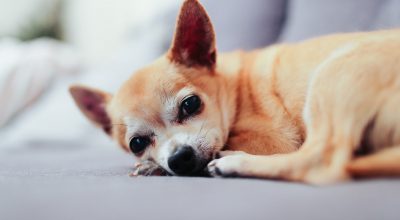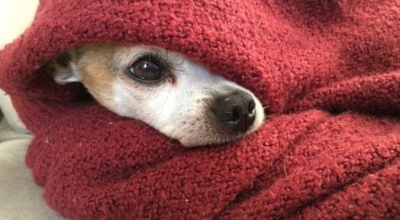Do you want to know if your Chihuahua will grow up to have long, luscious hair? Chihuahuas are generally easy to recognize due to their striking appearance. Once you know what to look for, long-haired Chihuahuas are easily identified.
They develop their most renowned characteristics as pups, so look for a few tell-tale signs, and you’ll know you’ve got a Chihuahua on your hands. First, however, don’t be shocked if your short-haired Chihuahua puppy begins to grow long hair. All Chihuahua coats are short at first, but some grow fuzzier than others.
Logical Tricks for Determining Whether or Not your Chihuahua will have Long Hair
If both parents have long hair, the pup may begin to display true long hair at six to eight months of age. However, it may take closer to a year. There is no set period for the pup to develop lengthy hair. Long hair is recessive to a smooth coat; therefore, if there were smooth coats in the gene pool, it might delay or limit the long coat.
It might take a long time for the fur to grow. Some long-haired chihuahuas do not get complete coats until they are over two years old. Others have full-fledged fur coats at an earlier age. By five or six months of age, your puppy should acquire her adult coat, whether long or short hair.
You can feel and examine their coat. While their coats are still short after a few weeks, your puppy’s lengthy coat may grow out as they mature. However, since not all Chihuahuas get long coats, your dog is a short-haired Chihuahua if they have a smooth, short, glossy coat even as they mature. Chihuahuas with long hair have a velvety, smooth, straight coat but may have some small waves or curling.
What you Should Know about the Lovely Long-Haired Chihuahuas
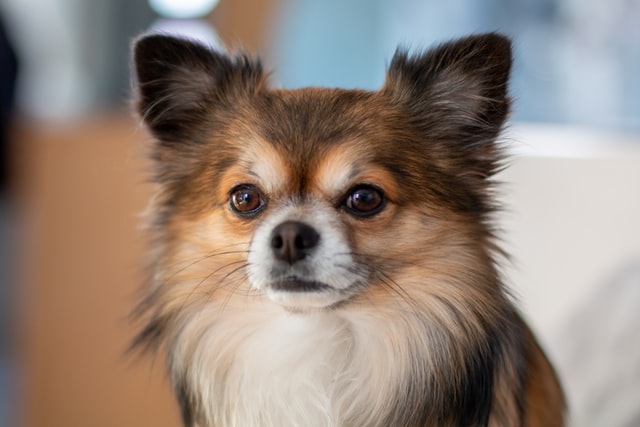
Chihuahuas with long hair are not a distinct breed. Chihuahuas with long and short hair are the same breed; the only exception is the expansion of their hair. Long-haired Chihuahuas have more abundant fur and a fuzzier appearance than short-haired Chihuahuas.
This breed of canine will require more maintenance than its short-haired counterparts. However, knots are easy to bypass with just a light combing because they are as little as their short hair counterparts.
➖Their Personality
Long-haired Chihuahuas are little canines with enormous personalities. Chihuahuas are a breed that is both devoted and clever. They can, however, be obstinate. Therefore, it is essential to establish guidelines for your Chihuahua, especially while educating your Chihuahua to manage his or her terrier disposition.
Since the breed is believed to be violent, many people may avoid getting a long-haired Chihuahua. One of the essential techniques to reduce aggressiveness in adult Chihuahuas is to socialize them from a young age. It is vital to understand that not all adult Chihuahuas are violent; they are lovely creatures.
➖There are Toy Chihuahuas
Chihuahuas are already little canines, but some people like them even smaller. Teacup Chihuahuas with long hair are not a distinct breed. They are simply shorter versions of the same kind. Unfortunately, the reduced size of these puppies brings with them extra health risks. Before you decide to purchase a long-haired teacup Chihuahua puppy, you should do a lot of research and think about these concerns.
➖Their Health
Health is a crucial consideration for any breed, even long-coated Chihuahuas. Chihuahuas, in general, are susceptible to cardiac problems. They are also predisposed to hydrocephalus, a disorder characterized by an accumulation of fluid in the brain, resulting in enlargement of the head and perhaps brain damage.
➖Their Grooming
However, both long and short-haired Chihuahuas shed. Long-haired Chihuahuas, in particular, benefit from brushing and washing regularly. Not only will these forms of combing reduce shedding, but they will also prevent knots and mats from forming in their coat. In addition, unlike some other tiny breeds with longer hair, Chihuahuas are not thought to suffer alopecia; therefore, trimming their coat does not raise the breed’s risk of balding.
Taking Care of a Long-Haired Chihuahua
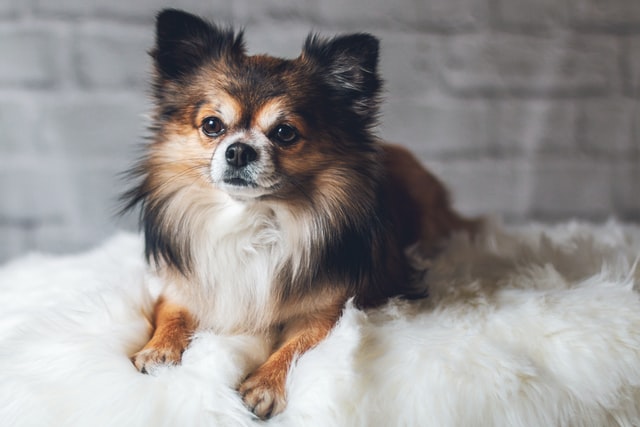
The long-haired Chihuahua, as their short-haired counterpart, is a lively and affectionate friend. Maintaining this little dog does not need much care, but because of its tiny size, you must take some steps to protect its protection.
🟢 Number 1
Keep your Chihuahua’s vaccines up to date by taking them to the vet regularly. Regular checks provide a basis for keeping track of any health concerns since the Chihuahua is susceptible to illnesses such as heart murmurs and a collapsed trachea.
🟢 Number 2
Feed high-quality dog food to your long-haired companion. Chihuahuas have a strong metabolism and use a lot of energy while playing; therefore, the amount of food they require will vary depending on their activity level and overall health. Every day, give your Chihuahua a quarter-cup to a half-cup of dog food. If required, divide the feeding into many meals.
🟢 Number 3
Maintain their lengthy hair’s cleanliness. While your Chihuahua may not be in the same league as the other dog breeds in terms of hair care intricacy, they will require maintenance to avoid becoming a walking mat. Brush your dog at least once a week to remove loose, dead hair and increase the frequency and duration of brushing if they are shedding excessively.
Bathe them every few months or as needed. Keep their nails short and clip them regularly, and examine their ears and eyes once a week for symptoms of infection or discomfort. Brush their teeth at least once a day to avoid dental problems.
🟢 Number 4
Your Chihuahua’s tiny height makes them easy to transport, but it also makes them vulnerable to damage in settings where other dogs would be safe. Do not keep them outside unattended since huge hunting birds may snare them, or they may fall prey to bigger uncontrolled dogs or other prey animals.
To avoid harm from leaping, provide stairs to get up and down from the sofa or bed. If required, or when you’re going out, use a cage to protect them out of your way.
🟢 Number 5
Allow your long hair to have a lot of fun. Chihuahuas are tiny furry pleasures of radiant energy, and they require exercise to keep healthy. So take your Chihuahua on a daily stroll to provide them some activity, or let them run about in a fenced-in yard. Provide them with a choice of toys to play with inside, and assist them in using all of their surplus energy.
How to Properly Groom your Long-Haired Chihuahua
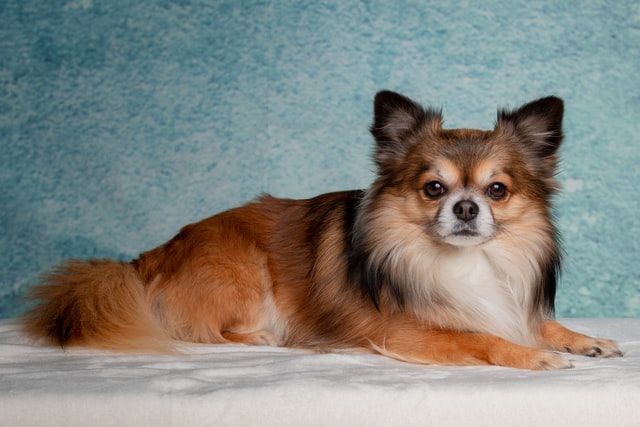
The little yet strong Chihuahua is the ideal dog for anybody searching for a loyal, joyful, and lively pet. In addition, the Chihuahua is very low-keeping in terms of coat care and grooming.
✔️Hair Brushing
The Chihuahua requires adequate maintenance, with long coats requiring more brushing attention than short coats. Regardless of the kind of Chihuahua, Brushing is a crucial grooming ingredient to keep the coat fresh. Brushing the coat of long-haired Chihuahuas four times a week is suggested.
Tangles, which are knotted hairs that can get bigger and bigger, often to the point of being cut off, can form in long coats. To avoid this, the coat should be treated, brushed, and then combed again to ensure it is free of clumping.
Grooming a dry coat can cause split ends, which can harm the coat’s general health. It is advised to sprinkle the coat lightly with a dog leave-in conditioner or hygiene spray to preserve the hairs and leave the fur lustrous and clean. Make cautious not to glaze the upper hairs.
The purpose of brushing a Chihuahua’s coat is to comb down deep enough to eliminate any dead hairs, activate natural skin oils, and eliminate any accumulated debris.
✔️Bathing
When a dog likes bath time, it may be such a pleasurable grooming activity that owners over-bathe their dog. A bath should be given to a Chihuahua every two to four weeks. Bathing your dog more frequently might cause dry skin, even if you use high-quality dog shampoo and conditioner. If there are aggravating conditions, such as a muddy coat, a bath might be provided to remove the debris.
Since they are small in size, a clean sink is generally preferable over a tub. The smaller enclosure enables an owner to better control the dog, and for Chihuahuas that are afraid of water makes the experience less daunting.
Monitor the warmth on the center of your wrist to make sure it’s not too cold or too hot. Filling the sink with four inches of water before putting the Chihuahua in will assist, as the sound of running water can cause anxiety. A non-slip mat keeps a Chihuahua from sliding and provides a more comfortable sense during washing and drying.
Ensure you have all of your bathing items on hand, so you don’t have to leave your Chihuahua alone. Also, ensure you have a soft, warm, and absorbent cloth on hand if your Chihuahua gets the chills after being extracted.
✔️Nail Care
Nail trimming is required every three months for most Chihuahua pets. While walking can assist to file down nails, it does so at an inconsistent rate, giving slanted and others higher than others. In addition, nails that are allowed to grow can create a variety of problems for a Chihuahua.
Trimming a Chihuahua’s nails may be scary for many parents worried about injuring their dog if they cut their nails too short. This can be difficult with other Chihuahuas that are energetic and have difficulty sitting still. If you choose to do your Chihuahua’s nails at home, ensure you have good equipment and clean them up.
While they may produce some sound, they are frequently a quick way to file the nails down. It is recommended that if using a regular clipper, you keep septic powder available, which is usually used to halt bleeding if the quick is accidentally cut.
If you have never cut your dog’s nails before, be prepared to inquire how everything works before purchasing good nail trimming equipment. If you’re going to trim the nail alone, be sure to do just a little at a time.
✔️Anal Glands
These are a set of glands situated on every side of a canine’s anus. These are also known as scent glands because they generally secrete very tiny movements that provide a dog to indicate its boundary. Excess liquid from these glands is generally produced when a dog goes to the restroom. A problem might emerge if there is an accumulation of fluid, which can occur if a dog has extremely soft bowel motions.
If glands rupture on their own, the affected region should be carefully cleaned. Since the damaged skin is prone to microorganisms, look for any symptoms of infection. Bring your Chihuahua to the clinic if they appear to be in pain or showing signs of infection.
✔️Ear Cleaning
Maintaining the ears clean is a critical grooming step that is sometimes forgotten. However, ear cleaning must be part of your regular grooming practice to avoid problems. When washing your Chihuahua, gently insert cotton in the ears to prevent water from penetrating the canals.
Wash out the inside of the leather with a small washcloth at least once a week. If you notice any lingering hairs coming out of their ear, pull it. You can have a groomer do this, but with a sprinkle of ear powder and your fingers, you can swiftly take them out.
Perform a fast ear washing once a month to eliminate extra wax, especially if your Chihuahua has a history of wax accumulation.
Fascinating Info About the Long-Haired Chihuahua You Need to Know
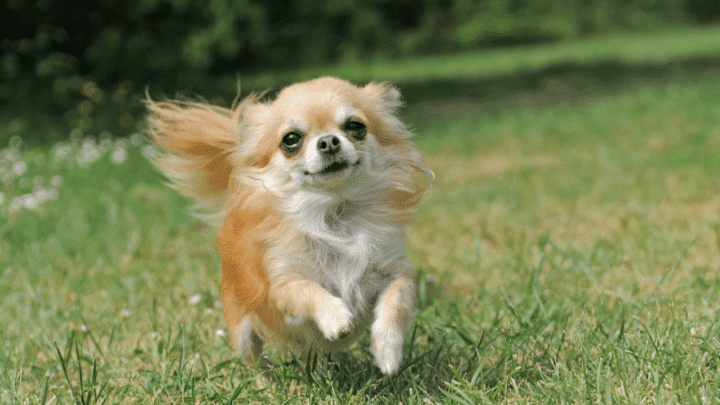
If you recognize anything about the long-haired Chihuahua, you remember they are gorgeous small breeds. So here are a few details about the long-haired Chihuahua that you need to know.
❕It takes some time to Complete the Whole Coat
Unlike many other breeds, the long-haired Chihuahua might take some time to grow a complete coat of hair. Some long-haired breeds progress and grow their full fur at an early age; but, this kind may not grow and expand all of its furs until they are 15-26 months old.
They have two coats when they mature: a soft, down undercoat and a lengthy topcoat. It’s the combination of the two coats that gives them such a fluffy appearance.
❕Males have more Hair than Females
Male long-haired Chihuahuas have much more hair than females. The male long-haired Chihuahua will produce a fluffier coat, the brighter red of the male and female. He’ll have a bigger, fluffier neck and increased hair covering all over his body.
If you encounter two long-haired dogs together and one appears to have a thicker coat than the other, the male is more likely. It is one method of distinguishing between the genders.
❕Long Furs Do not Imply Cold Tolerance
Chihuahuas of either breed are not suitable as outdoor dogs. Chihuahuas, regardless of hair kind, are indoor dogs. Some individuals believe that because their Chihuahua has lengthy fur, it may be left outside in the cool temperature – that it is insulated; but, this is not the case.
In reality, the long hair of a long-haired Chihuahua provides very little to shield it from the cold, and these dogs cannot resist freezing temperatures or heat for lengthy periods. So, this breed has to be kept indoors apart from being brought out for a play or a stroll.
❕Long-haired Chihuahuas can be Bred from Short-haired Chihuahuas
Yes, it is possible, and it all relies on the genes passed down via the bloodline. For example, some people are startled when a long-haired puppy appears after breeding two smooth coats together, but this is normal if the two smooth coats bred together each contain a pair of short-haired and long-haired DNA in them. The short-haired gene is usually dominant, but it will take precedence if the long-haired gene is available.
❕Heavily Replete Ears will Flap
The ears of a long-haired Chihuahua should naturally rise up on their head. However, if the dog has a curly coat on its head and ears, it may be difficult for the Chihuahua’s ears to stand up normally, and they may instead flop over on their heads.
However, they may bring them up at will, which should not be seen as a flaw in the breed or the dog. Over time, as the particular dog develops and builds muscle power, the ears may begin to stand higher on their own.
Frequently Asked Questions
Q: When is it possible to detect whether a Chihuahua has long hair?
A: By six or seven months of age, your puppy should be acquiring her adult coat, whether this is long or short hair.
Q: When do long-haired Chihuahuas develop their full coat?
A: long-coated Chihuahuas can take many months to develop their full coats, occasionally up to 15-26 months of age. The coat has a silky texture and can be flat or somewhat wavy, with or without an undercoat.
Q: Can short-haired Chihuahuas produce babies with long hair?
A: Long-haired puppies can be born from two short-haired chihuahuas. Both short-haired parents must be bearers of the long-hair gene.
Q: How long does it take for a Chihuahua to be considered a puppy?
A: Between 13 weeks and seven months, your Chihuahua’s growth will begin to decelerate, and by seven months, your dog will be near to adult size. Chihuahuas are considered adults when they reach the age of one year.
Q: What size is a Chihuahua with long hair?
A: Chihuahuas vary in a variety of sizes, but the average long-haired Chihuahua is five to nine inches tall at maturity and weighs three to six pounds.
Final Thoughts
It might be difficult to predict if your Chihuahua will develop long hair. Therefore, it is critical to be patient and to understand where and how to look.
Long-haired Chihuahuas are an excellent breed to add to your home. However, it’s crucial to keep in mind the health difficulties that this little breed might have. Your Chihuahua puppy can thrive with good socialization, frequent vet exams, and a healthy lifestyle.
Here at ILoveChihuahua, we share our personal experiences as owners of this feisty breed. We talk about recommended methods, dog supplies picks, and advice on common Chihuahua problems. Our goal is to promote responsible dog ownership, so there would be fewer Chihuahuas in shelters.

